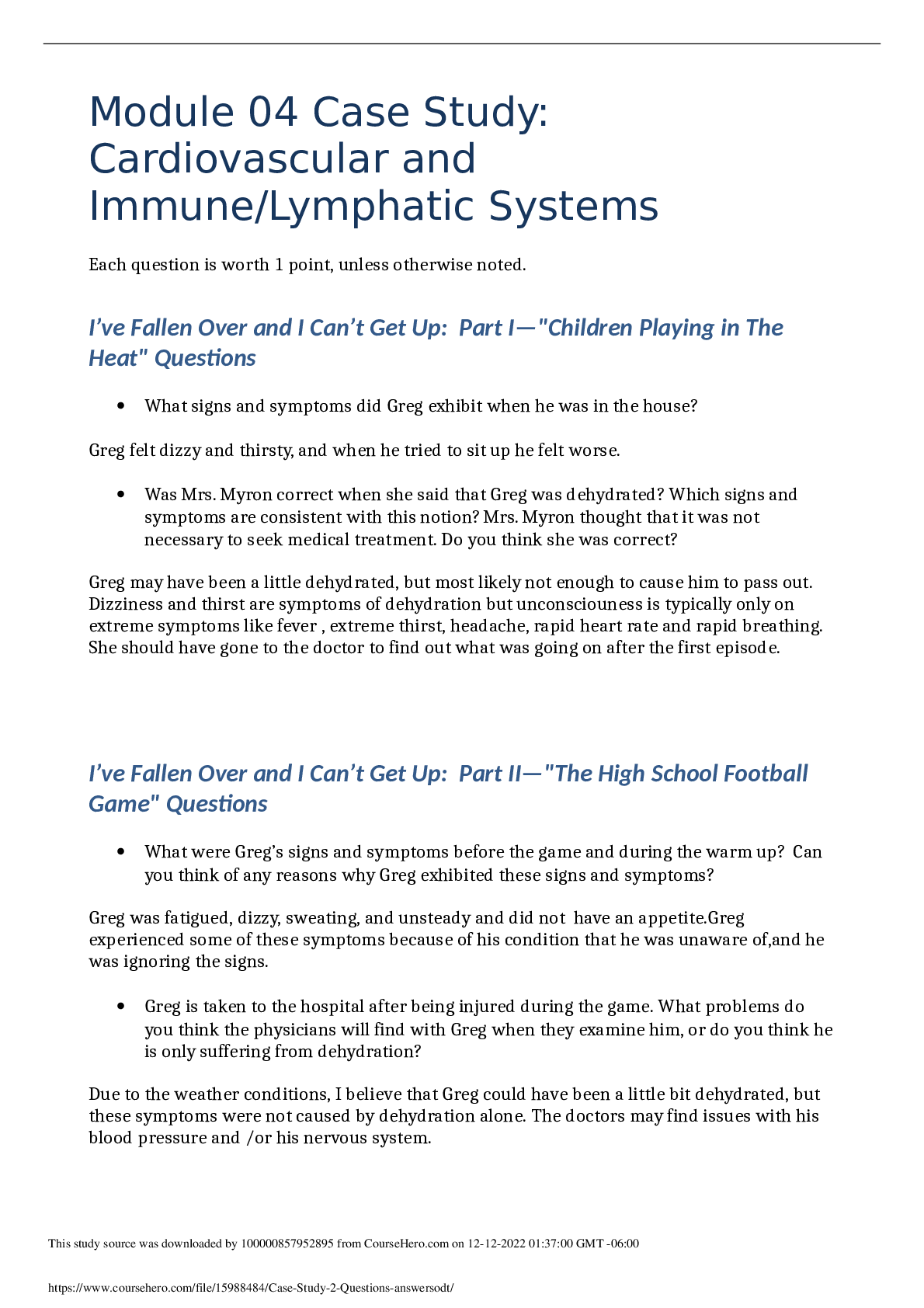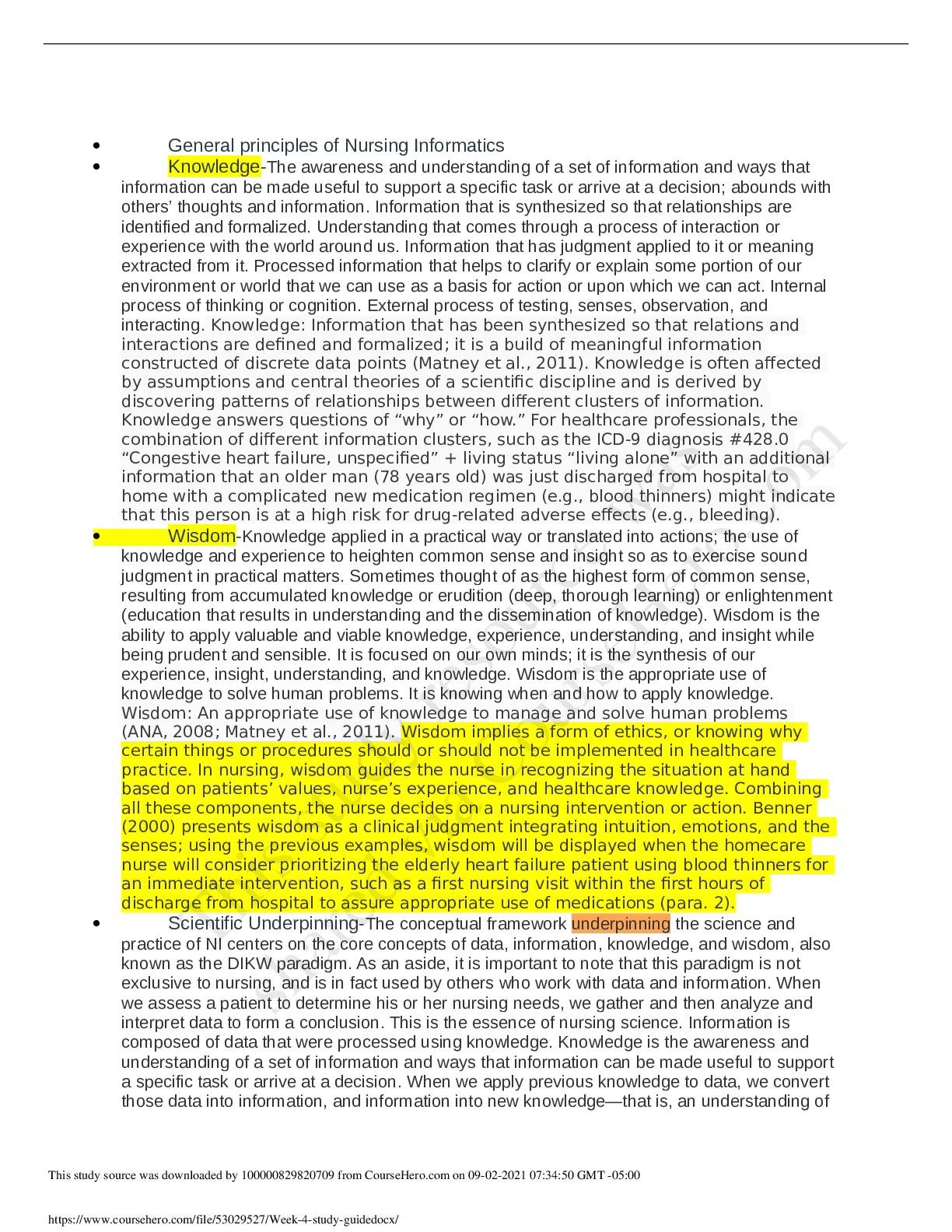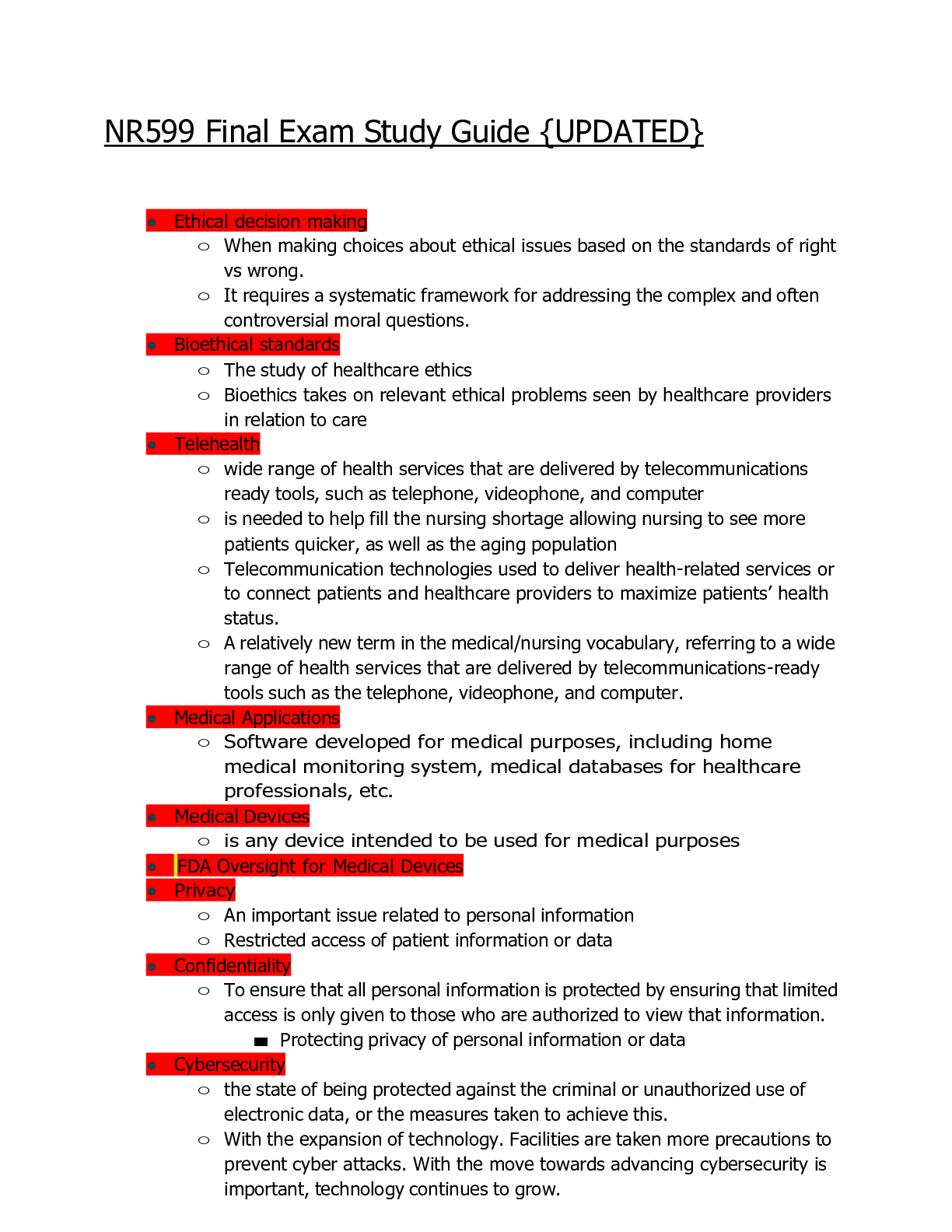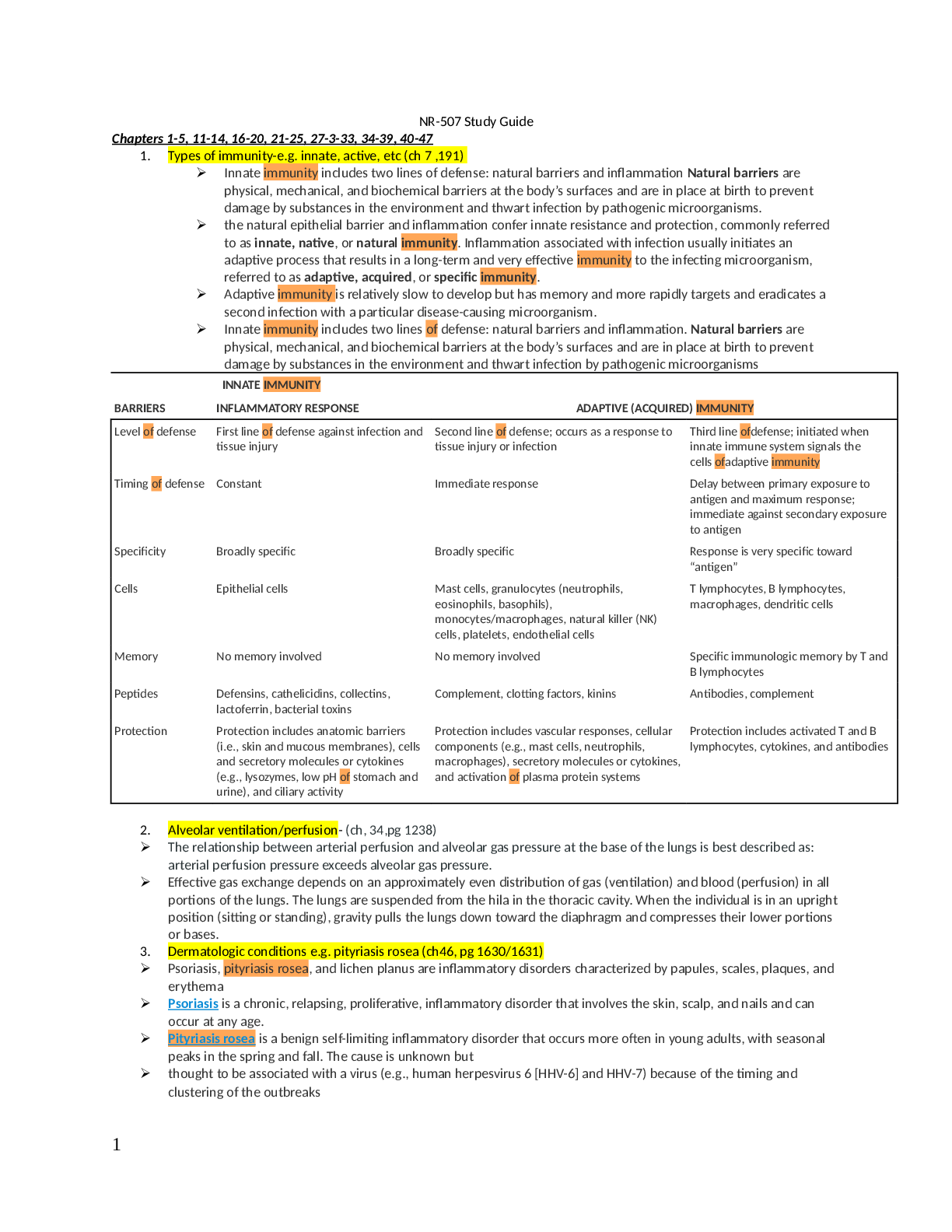Health Care > STUDY GUIDE > Rush University - NSG 533 Module 10 Shock Sepsis MODS Objectives Study Guide. Latest 2021 (All)
Rush University - NSG 533 Module 10 Shock Sepsis MODS Objectives Study Guide. Latest 2021
Document Content and Description Below
Rush University - NSG 533 Module 10 Shock Sepsis MODS Objectives Study Guide. Latest 2021.Define the terms infection, bacteremia, systemic inflammatory response syndrome (SIRS), sepsis, septic shock,... and multiple organ dysfunction syndrome (MODS) o Infection: invasion of normally sterile tissue/organism with some infectious organism(s) o Bacteremia: presence of viable infectious bacteria in the blood o Systemic Inflammatory Response Syndrome (SIRS): non specific systemic inflammation; may or may not be infectious o Shock: cellular/tissue hypoxia due to either decreased 02 deliver, increased 02 consumptions and/or inadequate 02 utilization What is shock? The inability of the body to maintain adequate cell & tissue perfusion Shock results in the inability to maintain VS, oxygenation, glucose delivery/use, removal waste product o Sepsis: Life threatening organ dysfunction caused by dysregulated host response to an overwhelming infection o Septic Shock: subset of sepsis with circulatory and cellular/metabolic dysfunction requiring intervention and associated with higher risk of mortality than sepsis alone o Multi Organ Dysfunction Syndrome (MODS): progressive organ dysfunction, normal homeostasis cannot be maintained without intervention(s) Compare and contrast etiology, risk factors and pathophysiology of cardiogenic, hypovolemic, anaphylactic, neurogenic, and septic shock states o All shock states have this in common: Inadequate tissue perfusion impaired cellular metabolism Decreased oxygenation – decreased delivery and/or increased demand Decreased delivery of nutrients – decreased delivery and/or increased demand Decreased removal of cellular waste products o Cardiogenic Shock Cardiogenic shock results from the inability of the heart to pump adequate blood to tissues and end organs from any cause, most common being the short-term consequences of an acute MI or a severe episode of myocardial ischemia Cardiogenic shock is defined as persistent hypotension and tissue hypoperfusion caused by cardiac dysfunction in the presence of adequate intravascular volume and left ventricular filling pressure Pathologic conditions that reduce contractility, cause pump failure, impair diastolic filling, or cause obstruction can lead to cardiogenic shock: Decreased contractility/pump failure: o Acute MI, cardiomyopathy, sepsis, myocarditis, pericarditis, aneurysm, dysrhythmias, contusion, metabolic abnormalities, papillary muscle rupture Impaired diastolic filling: o Related to dysthymias Obstruction: o Attributable to pulmonary embolism, cardiac tamponade, valvular disorders, tumors, and wall rupture/defect [Show More]
Last updated: 2 years ago
Preview 1 out of 14 pages
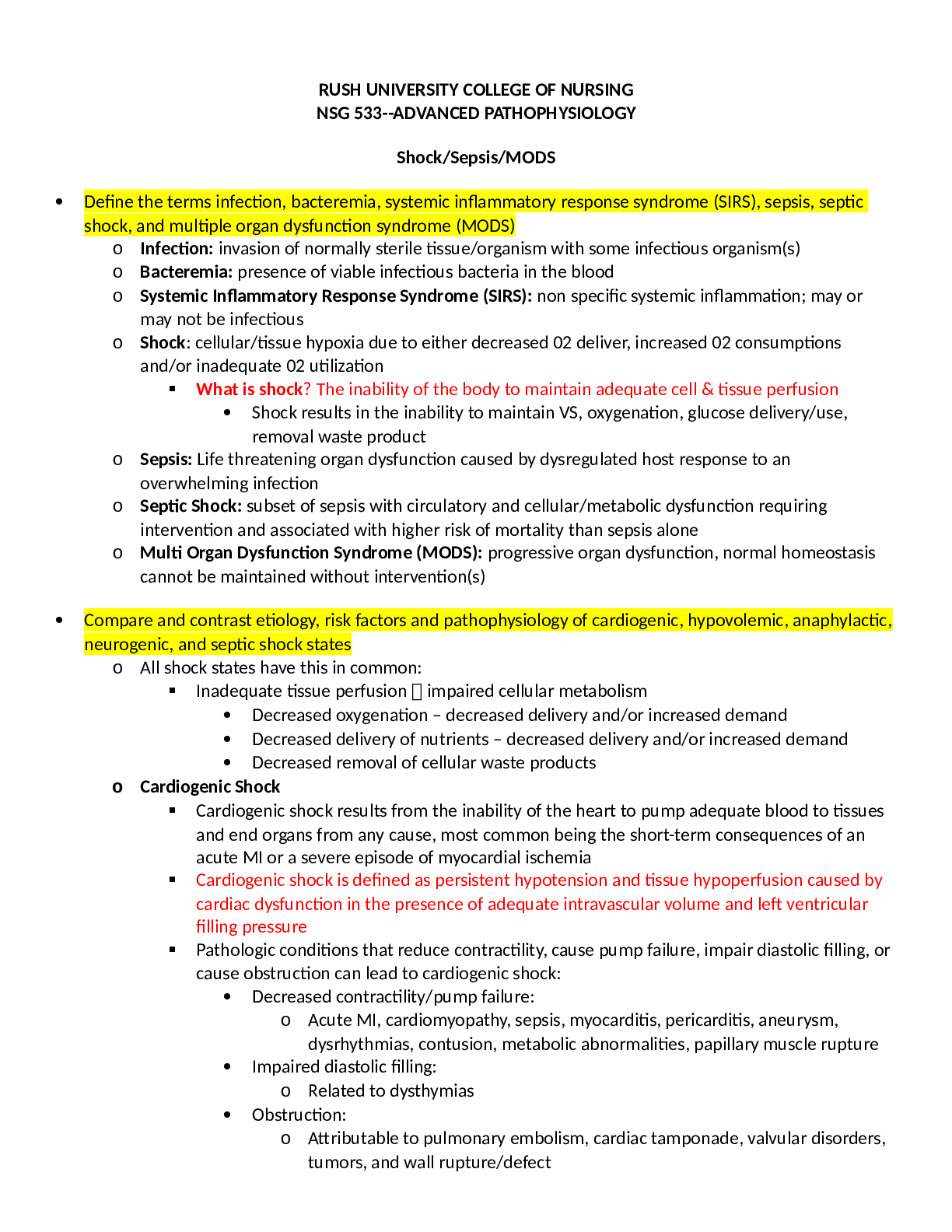
Buy this document to get the full access instantly
Instant Download Access after purchase
Buy NowInstant download
We Accept:

Reviews( 0 )
$15.00
Can't find what you want? Try our AI powered Search
Document information
Connected school, study & course
About the document
Uploaded On
Jun 26, 2021
Number of pages
14
Written in
Additional information
This document has been written for:
Uploaded
Jun 26, 2021
Downloads
0
Views
35















.png)
